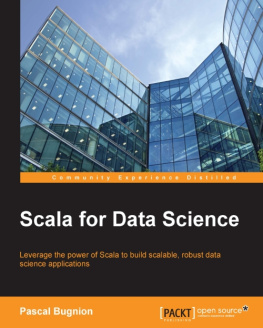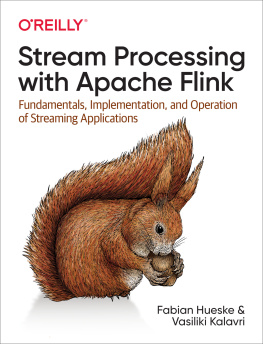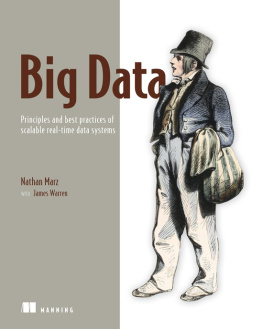Bahaaldine Azarmi - Scalable Big Data Architecture: A practitioners guide to choosing relevant Big Data architecture
Here you can read online Bahaaldine Azarmi - Scalable Big Data Architecture: A practitioners guide to choosing relevant Big Data architecture full text of the book (entire story) in english for free. Download pdf and epub, get meaning, cover and reviews about this ebook. year: 2016, publisher: Apress, genre: Computer / Science. Description of the work, (preface) as well as reviews are available. Best literature library LitArk.com created for fans of good reading and offers a wide selection of genres:
Romance novel
Science fiction
Adventure
Detective
Science
History
Home and family
Prose
Art
Politics
Computer
Non-fiction
Religion
Business
Children
Humor
Choose a favorite category and find really read worthwhile books. Enjoy immersion in the world of imagination, feel the emotions of the characters or learn something new for yourself, make an fascinating discovery.
- Book:Scalable Big Data Architecture: A practitioners guide to choosing relevant Big Data architecture
- Author:
- Publisher:Apress
- Genre:
- Year:2016
- Rating:4 / 5
- Favourites:Add to favourites
- Your mark:
Scalable Big Data Architecture: A practitioners guide to choosing relevant Big Data architecture: summary, description and annotation
We offer to read an annotation, description, summary or preface (depends on what the author of the book "Scalable Big Data Architecture: A practitioners guide to choosing relevant Big Data architecture" wrote himself). If you haven't found the necessary information about the book — write in the comments, we will try to find it.
This book highlights the different types of data architecture and illustrates the many possibilities hidden behind the term Big Data, from the usage of No-SQL databases to the deployment of stream analytics architecture, machine learning, and governance.
Scalable Big Data Architecture covers real-world, concrete industry use cases that leverage complex distributed applications , which involve web applications, RESTful API, and high throughput of large amount of data stored in highly scalable No-SQL data stores such as Couchbase and Elasticsearch. This book demonstrates how data processing can be done at scale from the usage of NoSQL datastores to the combination of Big Data distribution.
When the data processing is too complex and involves different processing topology like long running jobs, stream processing, multiple data sources correlation, and machine learning, its often necessary to delegate the load to Hadoop or Spark and use the No-SQL to serve processed data in real time.This book shows you how to choose a relevant combination of big data technologies available within the Hadoop ecosystem. It focuses on processing long jobs, architecture, stream data patterns, log analysis, and real time analytics. Every pattern is illustrated with practical examples, which use the different open sourceprojects such as Logstash, Spark, Kafka, and so on.
Traditional data infrastructures are built for digesting and rendering data synthesis and analytics from large amount of data. This book helps you to understand why you should consider using machine learning algorithms early on in the project, before being overwhelmed by constraints imposed by dealing with the high throughput of Big data.Scalable Big Data Architecture is for developers, data architects, and data scientists looking for a better understanding of how to choose the most relevant pattern for a Big Data project and which tools to integrate into that pattern.
Bahaaldine Azarmi: author's other books
Who wrote Scalable Big Data Architecture: A practitioners guide to choosing relevant Big Data architecture? Find out the surname, the name of the author of the book and a list of all author's works by series.

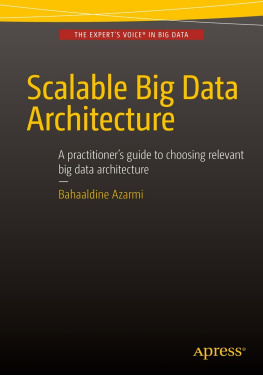
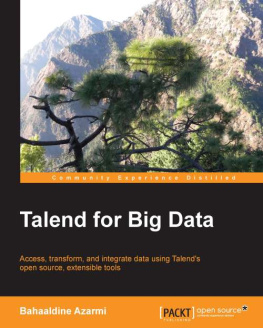

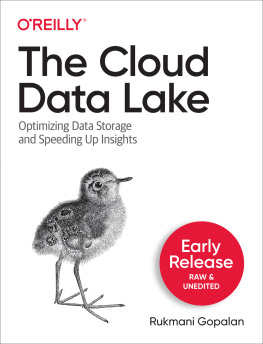
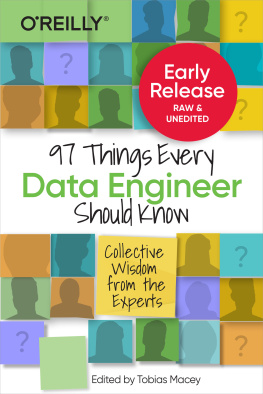


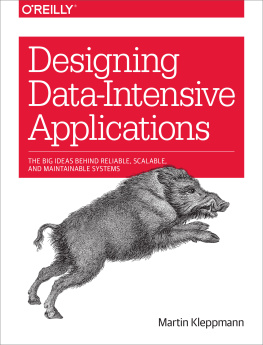
![Jay Kreps - I [heart symbol] logs: event data, stream processing, and data integration](/uploads/posts/book/193914/thumbs/jay-kreps-i-heart-symbol-logs-event-data.jpg)
